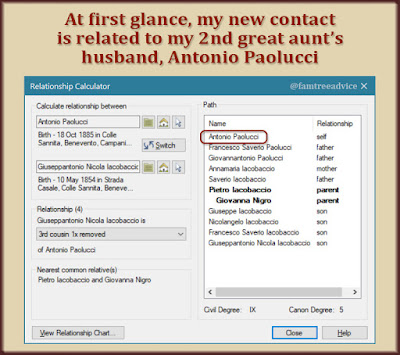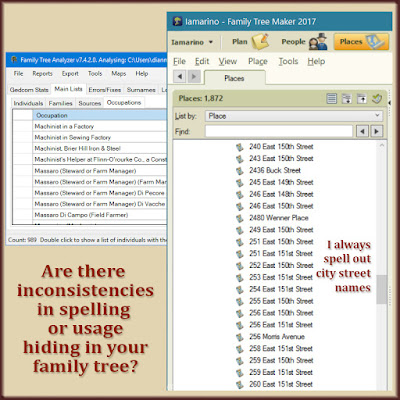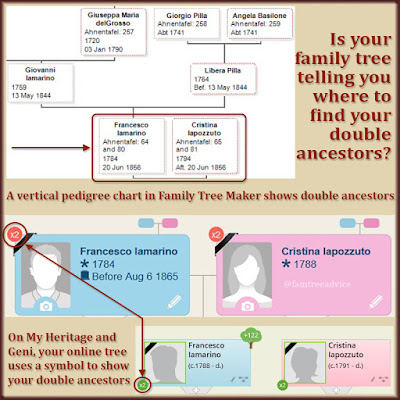It may happen at any time. And when it does, you should drop everything.
One of the best things about keeping my family tree on Ancestry.com is the mailbox. At any given moment, I can get a message from a possible cousin.
It's like Christmas Day each time I get a new message. Will this person help me find a missing piece of my genealogy puzzle? I pay attention to each message and treat it seriously.
Last week I heard from a woman I was about to contact. I noticed she was a DNA match to both my dad and me. And I saw her borrowing census forms I'd saved to my family tree. We quickly established that her ancestors once lived up the block from my parents in the Bronx. And we both have roots in Colle Sannita, Italy.
Yesterday I heard from another woman who may not have taken a DNA test. But Ancestry informed her that she and I had shared ancestors. Her 3rd great grandparents were in my tree.
 |
| Look beyond the face-value relationship. There may be more to it. |
The relationship is hard to wrap your head around, but her people are tied to my 2nd great aunt's husband. And he happens to be the great grandson of my double 4th great grandparents. (See 3 Ways to Find Double Ancestors in Your Family Tree.)
There are no suitable words for these crazy relationships. Let's just say her people are my people.
I dropped everything and got to work. Her 2nd great grandfather was not in my family tree. So, using her online tree for clues, I found his 1829 birth record in my collection of vital records. Then I found his son Giuseppantonio's 1854 birth record.
My new contact's family tree says Giuseppantonio married a woman born in the next town, Circello. Luckily, I have ancestors from Circello. So I have all the available Circello vital records on my computer, too.
I found his wife's 1850 birth record and saw that her mother's name was Petriella. That name has a lot of significance to me. It's my 1st cousins' last name, and it's the last name of some of our DNA matches.
 |
| Working on the family tree of a possible cousin can net you a lot more relatives. |
This Petriella married in Circello in 1842. I harvested as much information from her marriage as possible, including:
- Her 1819 birth record
- Her father's 1838 death record
- Her grandfather's 1821 death record
- Her husband's 1817 birth record
- His father's 1839 death record
- His grandfather's 1790 death record
- The full set of marriage records, including:
- publication of their intention to marry
- permission to marry
- the date they married in church.
Each time I found a new name, I glanced at my new contact's tree to see if my information agreed with hers. It did, but my document collection lets me go much further back in time.
 |
| An unexpected relationship is made clear with some color-coding. |
I'll continue exploring the documents and adding facts to my family tree. My new contact saved me from hitting a dead end with this particular family. I might never have known that Giuseppe married a girl from the next town and had several children there.
Now I can keep on building that family. I can follow them across the ocean to (of course) the Bronx. And I may make even more connections to distant relatives. That's what you've got to do to find that connection.
At this moment, my family tree has 21,761 people. And that's after I cut out and stopped documenting American in-laws.
Do you want to find your connection to distant cousins? Stretch out your branches as far as possible.
If you're keeping your family tree to yourself, you're missing out on tons of opportunities.




